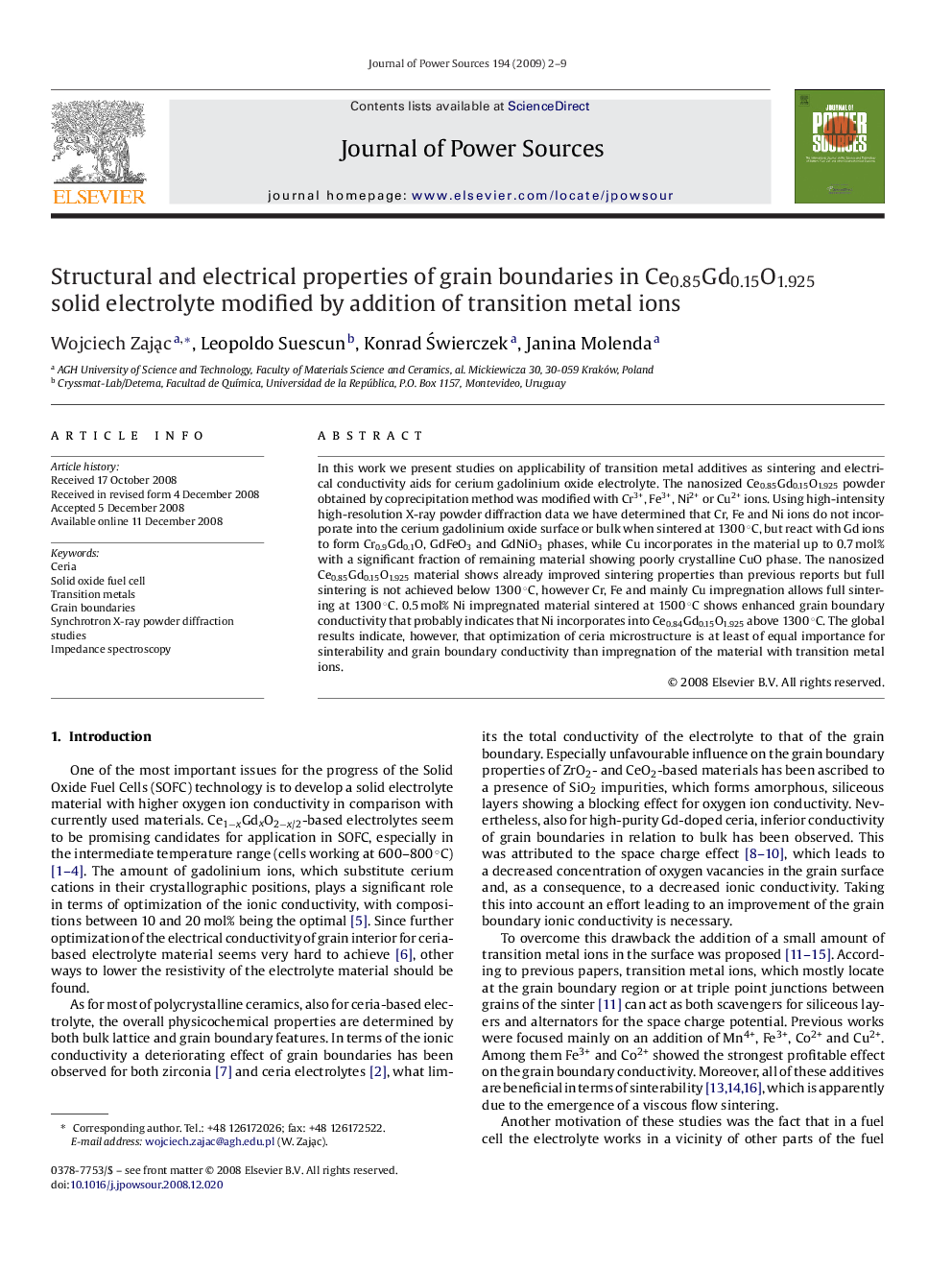| Article ID | Journal | Published Year | Pages | File Type |
|---|---|---|---|---|
| 1289809 | Journal of Power Sources | 2009 | 8 Pages |
In this work we present studies on applicability of transition metal additives as sintering and electrical conductivity aids for cerium gadolinium oxide electrolyte. The nanosized Ce0.85Gd0.15O1.925 powder obtained by coprecipitation method was modified with Cr3+, Fe3+, Ni2+ or Cu2+ ions. Using high-intensity high-resolution X-ray powder diffraction data we have determined that Cr, Fe and Ni ions do not incorporate into the cerium gadolinium oxide surface or bulk when sintered at 1300 °C, but react with Gd ions to form Cr0.9Gd0.1O, GdFeO3 and GdNiO3 phases, while Cu incorporates in the material up to 0.7 mol% with a significant fraction of remaining material showing poorly crystalline CuO phase. The nanosized Ce0.85Gd0.15O1.925 material shows already improved sintering properties than previous reports but full sintering is not achieved below 1300 °C, however Cr, Fe and mainly Cu impregnation allows full sintering at 1300 °C. 0.5 mol% Ni impregnated material sintered at 1500 °C shows enhanced grain boundary conductivity that probably indicates that Ni incorporates into Ce0.84Gd0.15O1.925 above 1300 °C. The global results indicate, however, that optimization of ceria microstructure is at least of equal importance for sinterability and grain boundary conductivity than impregnation of the material with transition metal ions.
